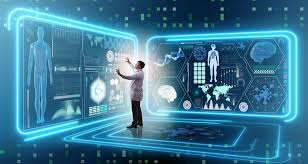AI is being used across a wide spectrum of medical procedures. Its use has proved life saving in some instances as well as cost saving. Often, our first thought for applying computer vision to medicine is as a diagnostic tool for medical imaging like CAT scans and Xrays. There are also non-treatment applications in far-ranging areas, from monitoring the progress of treatment, to confirming the identity of patients, to automating electronic operating room records to drug discovery acceleration.
Cell counting and image recognition
It has been more than a century since Louis-Charles Malassez invented the haemocytometer, a chamber designed to count red blood cells accurately. Fast forward to the present day and computer vision is being used to identify and count cell nuclei not only more accurately than people can count, but far faster. To accomplish this, an AI model is trained to identify cell nuclei. From there sample images are annotated, and then machine learning models generate neural networks. When microscopy images are sent to the computer vision model, the number of cells is calculated in seconds. This process can scale infinitely because one GPU chip can handle over 100 simultaneous requests. This means that drug development researchers can test many more compounds far more quickly and with more precision than ever before. New drugs can come to market years earlier, saving lives and lowering drug development costs.
AI surgical logs
The “paperless office” shift to electronic surgical logs made perfect sense as part of the productivity increase from the computer revolution, but the use of computer vision in the operating room may even be more profound. Tracking actions in an OR, from draping patients to closing up of surgical wounds is now revolutionizing record keeping. Anesthesiologists still compile handwritten records between surgeries, but now their time can be more efficiently used. Another benefit is preventing the inadvertent retention of surgical instruments, which as recently as 2018 saw 4,500 to 6,000 cases per year in the United States, according to the American Society of Anesthesiologists. Computer vision systems are also being created to track instruments and procedure times to make electronic record-keeping even more accurate.
Patient identification
Facial authentication of patients during intake and over the course of treatment is another area whether AI can play a critical role in healthcare when integrated into the workflow at medical facilities. Misidentification of patients is caught more than 90 percent of the time before harm occurs. Still, over a 2.5 year period between 2013 and 2015, 7,600 wrong-patient events at 181 hospitals in the U.S. occurred, with roughly 9 percent of those errors resulting in harm or death. The cause of death varies from patients not being resuscitated in the OR because doctors pulled the wrong health record, which included a do-not-resuscitate order. Patients were given another’s prescription, or given food that they are unable to eat. By using facial authentication tied to a patient’s MRN at every step, hospitals and caregivers can reduce these catastrophic events.
Medical imaging analysis
The use of computer vision in medical imaging analysis has a plethora of benefits. It lessens the time medical professionals take in analyzing images. Object recognition can accurately identify features in images faster and more accurately than people. Often these discoveries can take place when formations are smaller, allowing earlier detection, which can save lives and lessen the severity of treatment. Throughout the progress of treatment, computer vision can use a change-detection AI model to identify differences between images. All of these techniques can be applied to many types of imaging: MRIs, CAT scans, sonograms, and X-rays.
AI training techniques apply to all of these examples. Objects are annotated in visual data, bone fractures, for example, and then machine learning generates neural networks. This is, of course, a simplification of the process, but it even applies to facial authentication. Computer vision requires training data, in this case, a few images of a person’s face, to generate a model. Once trained, visual details can be identified quickly and accurately by computer vision, whether that detail is the identity of a person, the change in a fracture, the reaction of cells to a compound, or the removal of an instrument from a surgical cavity.
AI is transforming healthcare right now, and these use cases of visual AI techniques will offer improvement in outcomes and costs for both patients and medical professionals. No longer is AI an experiment, but it offers true solutions in many areas, including healthcare.

